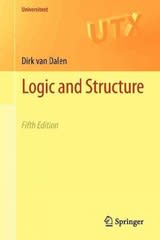Question
Directions: For each problem, show at minimum: 1) The null and alternative hypotheses, written using proper notation (2 points) 2) The test statistic calculation showing:
Directions:
For each problem, show at minimum:
1) The null and alternative hypotheses, written using proper notation (2 points)
2) The test statistic calculation showing: the letter of the test statistic (t or z), the formula for the test statistic, the numbers filled into the formula, and the final result. Round Ztesttest statistics to two decimals; round ttesttest statistics to three decimals. (3 points)
3) The rejection step showing BOTH the p-value approach (2 points) AND the CV approach (2 points). You do not need to draw the rejection diagram unless you want to. You must show the proper p-value and proper CV, and the rejection rule (whether in numbers or with the diagram) that led you to your decision about the null hypothesis. State what happened to the nullandthe alternative hypotheses to get full credit.
4) Interpret the test result, referencing the alpha significance level (or percent confidence level), and answering all questions asked. (3 points)
1. Closing costs for mortgages are an important concern for people buying homes. A realtor read an article in an industry publication that stated the mean closing costs for single-family homes in Michigan were $2104. She suspected that closing costs in her county were lower than that.
To test this, the realtor took a random sample of 51 single-family home sales in her county. In the sample, the mean closing costs were $1945 and the standard deviation was $714.
Perform a hypothesis test to determine whether the population mean closing costs in the realtor's county are lower than the mean in Michigan as a whole. Use an = 0.01 significance level. Based on these results, can the realtor tell her clients that population mean closing costs are lower than $2104 in her county?
2. The realtor had noticed some recent changes in the sales prices for single-family homes in two cities in her county. While City A and City B had always had similar home prices in the past, recently she had noticed this seemed to be changing. She decided to use hypothesis testing to see if the population mean home price was different in these two cities.
The realtor took two random, independent samples. In City A, a random sample of 46 single-family homes sold recently had a mean sales price of $200,332. In City B, a random sample of 44 single-family homes sold recently had a mean sales price of $174,052. From past experience, the realtor assumed that the population standard deviation of home sales prices was $50,514 in City A, and $48,860 in City B.
Using an = 0.05 significance level, perform a hypothesis test to determine whether the population mean home sales price in City A isdifferentthan City B. Use the home sales in City A as population 1. Can the realtor conclude that the population mean price in City A is different than in City B?
Extra credit (2 points):without doing another hypothesis test, can the realtor conclude that mean prices in City A are higher than City B? If so, how can she tell? If not, why not?
Step by Step Solution
There are 3 Steps involved in it
Step: 1

Get Instant Access to Expert-Tailored Solutions
See step-by-step solutions with expert insights and AI powered tools for academic success
Step: 2

Step: 3

Ace Your Homework with AI
Get the answers you need in no time with our AI-driven, step-by-step assistance
Get Started


